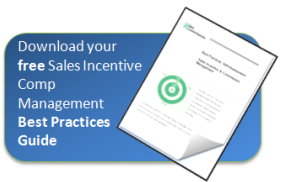The following is a distillation of a recent, quite lively, dialog on LinkedIn amongst several practitioners in the sales compensation world. Given the importance of the investment companies make in sales compensation, this topic merits our attention.
Best Practice guiding principle:
-
Couple action and reward as closely in time as possible
This is a basic lesson from BF Skinners Operand Conditioning work and lies at the root of using sales incentives as a tool to help maintain sales force alignment with corporate goals that may change to keep pace with a shifting competitive environment. Immediacy is one of four basic factors that can alter the effectiveness of reinforcement such as incentive compensation. An example often cited is a situation where someone’s license plate is caught by a traffic camera for speeding and they receive a speeding ticket in the mail a week later, this consequence will not be very effective against speeding. But if someone is speeding and is caught in the act by an officer who pulls them over, then their speeding behavior is more likely to be affected. The same is true for sales incentives, the closer the payouts is to the action being rewarded, the stronger the reinforcement.

Applying the Principle:
While not perfect, the following definitions certainly build our understanding and help put this principal into practice: Plans that reference Sales Commissions typically tie payouts to individual transactions (i.e. 0.75% of each sale) while plans that reference Sales Incentives typically tie payouts to a summary level performance (i.e. total sales for the territory over a defined the performance period as measured against a goal/quota). Situation exist where both methods are employed, but for this summary we’ll keep the lines fairly distinct.
Sales Commissions:
Given the level of influence the sales person has over every single sales transaction, the Best Practice Guidance is to pay as soon after the sale as your internal systems can reasonably support. Monthly payouts are common with some firms/industries moving towards more frequent payouts. A situation to watch out for is for those where cancellations are frequent enough to make clawbacks of paid commissions an issue. In those situations, extending the payout cycle a bit will help simplify the process enough to be worth considering.
Sales Incentives:
For companies with plans that are primarily sales incentives: the following guidance provided by Chad Albrecht has much merit; “The primary determinant is pay mix. 85:15 companies pay semi-annual or annual. 75:25 pay quarterly. 60:40 or more pay monthly”.
So what determines pay mix? Companies with longer sales cycles and/or more of a ‘farmer’ selling model tend to have a higher base component in their pay mix. Companies with shorter sales cycles and more of a ‘hunter’ sales profile tend to have lower base components in their pay mix.
An important point to remember is that sales reps with a low pay mix will depend on incentive income not as much as a bonus but to actually pay their bills and increase pressure for more frequent payouts.
Other factors which may influence your payout frequency decision:
Industry regulations: Regulations in certain industries (such as financial services) may be pushing for longer payout cycles.
Those employing monthly or quarterly payouts on plans employing annual targets may want to consider capping those payouts if you wish to minimize clawbacks. Be sure to check in to this blog next week for a mroe detailed discussion of this situation.




